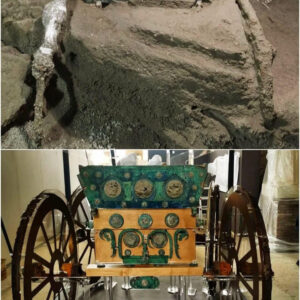Archaeologists in Slovakia recently uncovered an extraordinary find: the first-ever Roman aqueduct discovered in the country. This historical gem, located near the capital city of Bratislava at the Rusovce Mansion, dates back to the second century and provides a rare glimpse into the technological marvels of ancient Roman engineering. Excavations at this site, which is undergoing renovation, have been ongoing for several years, and the discovery of this aqueduct adds a significant chapter to Slovakia’s ancient history. The aqueduct, which once transported water likely for a Roman bathhouse, has shed light on the area’s Roman past, previously unknown to many.
The Historical Context of the Rusovce Mansion
Rusovce Mansion, situated in the southwestern part of Slovakia, near Austria and Hungary, has been the focal point of archaeological research in recent years. The mansion itself, a neo-Gothic structure built in the 19th century, is situated on grounds with a rich and complex history.
The site was once home to a 13th-century castle, which was replaced by the current mansion, and has yielded multiple layers of history through archaeological excavation. The area surrounding the mansion has been a hotbed for discoveries ranging from Iron Age settlements to Roman artifacts, all of which offer valuable insights into the region’s development over millennia. The ongoing restoration work at the mansion has, therefore, become an invaluable opportunity to explore and understand the diverse historical periods that have shaped Slovakia’s heritage.
The Roman Aqueduct Discovery
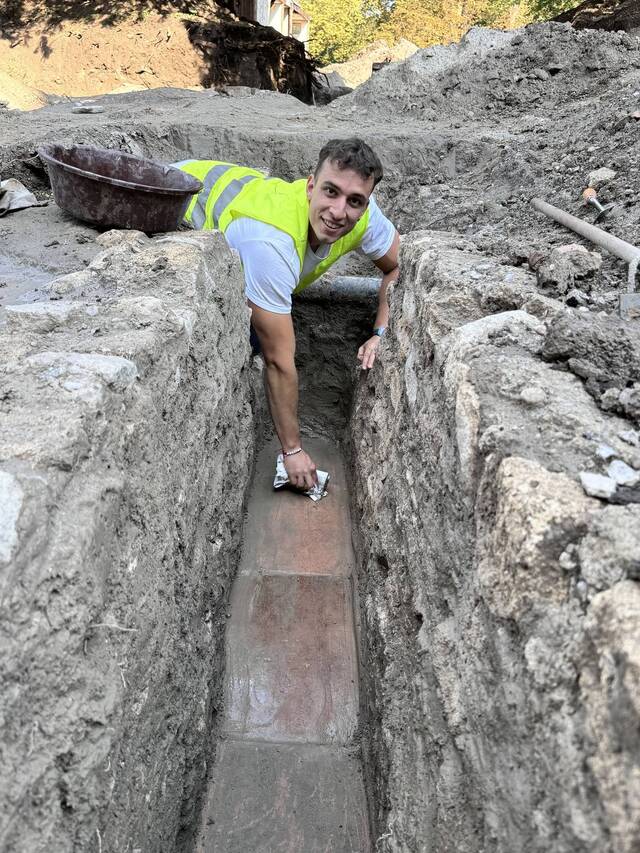
During a recent phase of excavation, archaeologists were amazed to uncover an underground stone channel, believed to be a Roman aqueduct. The aqueduct was found about two and a half feet below the ground, and its construction remains exceptionally well-preserved.
Stretching for approximately 125 feet, the channel is made of stone and lined with tegulae, the clay bricks commonly used in Roman architecture. This discovery marks the first of its kind in Slovakia and provides essential evidence of Roman engineering in the region. Although similar aqueducts have been found in nearby countries such as Austria, this is the first direct connection to Roman infrastructure within Slovakia’s borders.
Video
Watch the video Exploring a Virtual Roman House to step inside and experience life in ancient Rome through cutting-edge virtual technology.
Architectural Features of the Roman Aqueduct
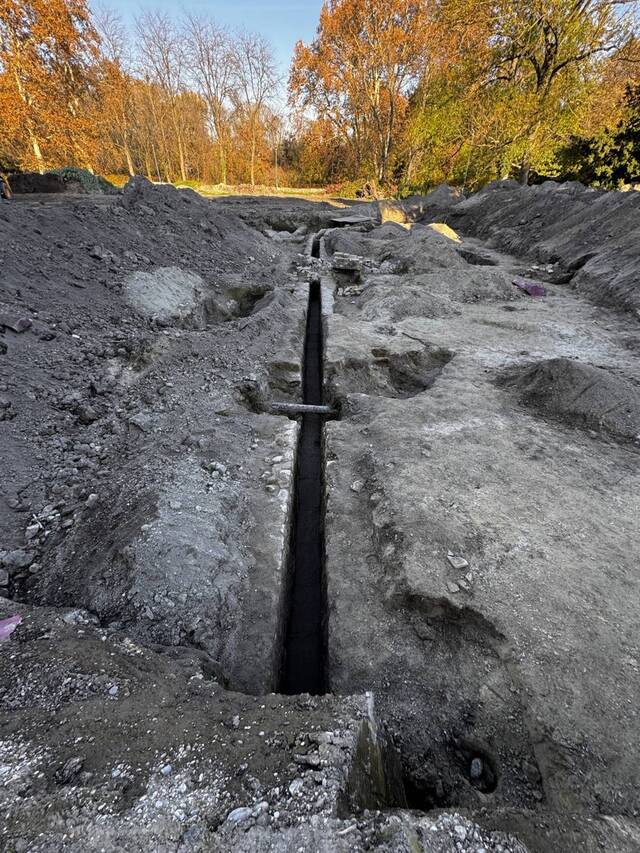
The Roman aqueduct discovered at Rusovce Mansion is a marvel of ancient engineering. Measuring around one foot in width, it is designed with a sloping structure that likely allowed gravity to carry water from one point to another. The aqueduct’s base is constructed with tegulae, arranged meticulously to maintain the water’s flow.
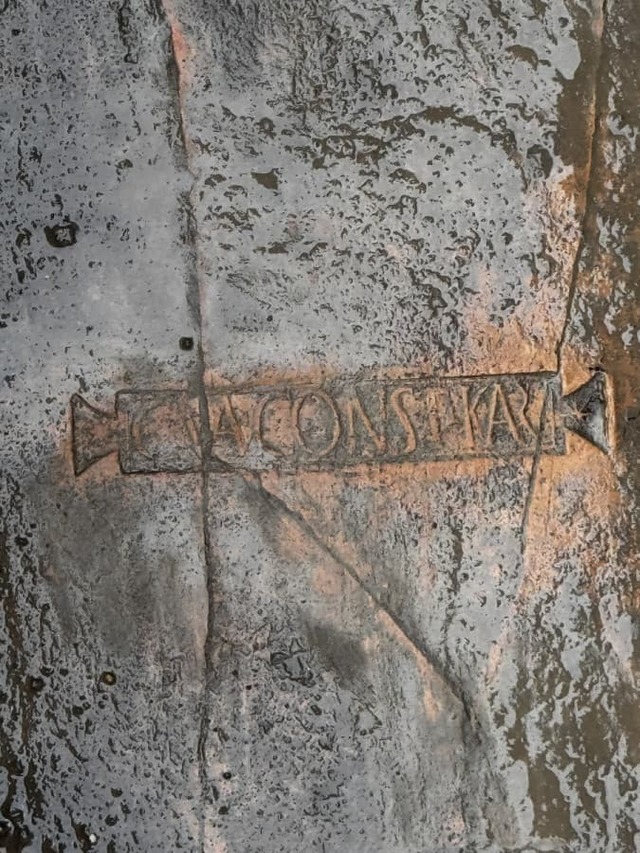
The excellent preservation of these tiles has provided a wealth of information for the archaeologists involved in the excavation. Notably, some of the tegulae bear a manufacturer’s stamp that reads “C VAL CONST KAR,” indicating the name of a brickmaker, Gaius Valerius Constans, who was likely from the Roman town of Carnuntum, in modern-day Austria. Moreover, one tile featured a unique paw print of a dog that had walked across the wet clay while it was drying, offering a rare glimpse into the everyday life around the construction of this aqueduct.
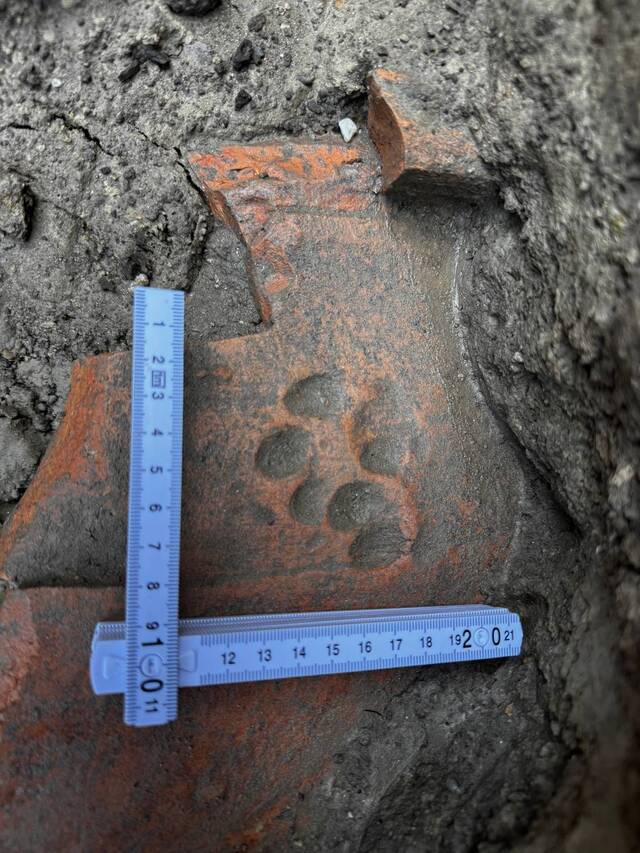
Roman Engineering in Slovakia
Roman aqueducts were an essential feature of Roman urban life, facilitating the transport of water for both public and private use. These structures were built with remarkable precision and designed to use gravity to transport water over long distances. The discovery of an aqueduct in Slovakia is particularly significant because most of the country was never part of the Roman Empire. However, the southwestern part of Slovakia, including modern-day Bratislava, was once a part of the Roman province of Pannonia, which also encompassed parts of present-day Austria and Hungary. The aqueduct at Rusovce Mansion serves as physical evidence of the Roman presence and influence in this region, contributing to our understanding of how Romans managed water and infrastructure in their empire.
The Aqueduct’s Purpose and Theories About Its Use
The aqueduct found at Rusovce Mansion is thought to have been used to supply water to a Roman bathhouse, although no direct evidence has been found to confirm this theory. The location of the aqueduct, running toward the mansion’s southern wing, suggests that it may have been built to serve a structure that has since been demolished. The presence of Roman ceramics, including luxury items, around the site further supports the idea that the aqueduct was part of a larger Roman complex that served the region’s elite. While no physical remains of a bathhouse have been discovered, the possibility that the aqueduct was used to transport water to such a structure remains a strong hypothesis.
Excavation of Artifacts and Additional Finds
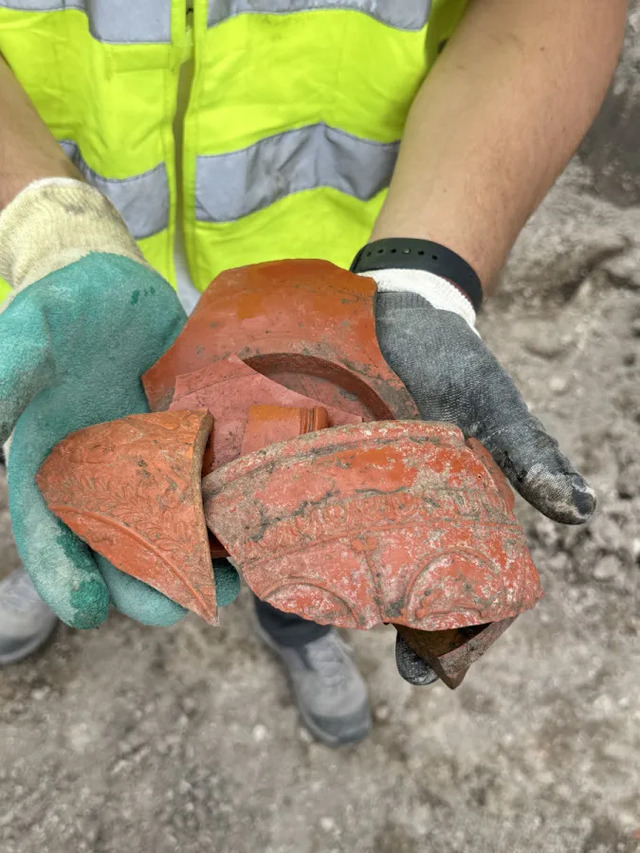
Alongside the aqueduct, the excavation team has uncovered several other fascinating artifacts that provide insight into life in the Roman period and earlier. Among the finds were Roman luxury ceramics, which highlight the area’s commercial significance, as well as Early Iron Age and Medieval objects, such as window glass, a silver bracelet, and an ancient wallet. These artifacts paint a picture of a vibrant and dynamic settlement, with cultural and economic ties reaching across Europe. Additionally, a medieval brick kiln was discovered, possibly used for the production of lime, an important material in construction. This kiln may have been linked to the nearby Roman camp, where marble statues and reliefs were likely processed and reused.
Modern Finds: The Icehouse and 19th-Century Discoveries
The archaeological team has also uncovered a more recent discovery: a large, buried circular structure believed to have been an icehouse used by the 19th-century owners of Rusovce Mansion. Icehouses were commonly used in the past to store ice for food preservation and cooling beverages, particularly during the summer months. The discovery of this icehouse adds a unique layer to the mansion’s history, linking it to the practices of its later owners. Such findings show how historical structures evolve over time, with each period contributing its own distinct features to the overall legacy of the site.
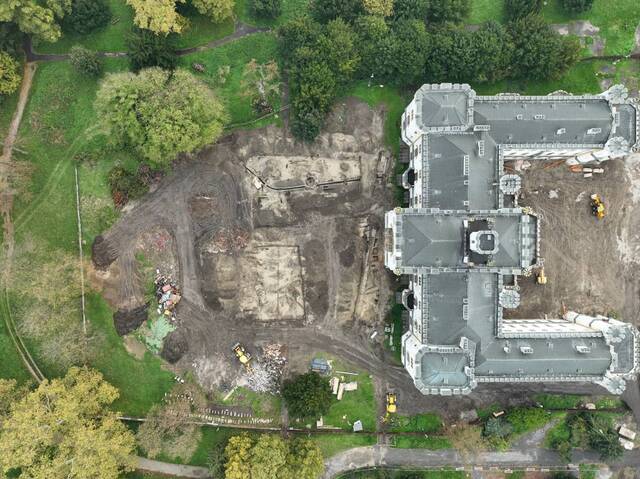
Conservation Efforts and Future Research
The Slovakian government, in coordination with the National Monuments Office, has decided to preserve the Roman aqueduct in situ, ensuring that this invaluable discovery remains protected for future generations. This decision required modifications to the original plans for the mansion’s restoration, but it underscores the significance of preserving historical sites and their findings.
The continued excavation at the site will undoubtedly reveal more details about the aqueduct and its role in the Roman landscape. Researchers are hopeful that further exploration will uncover more connections between the aqueduct and the surrounding structures, deepening our understanding of Roman life in this region.
Conclusion: A Glimpse Into Slovakia’s Roman Past
The discovery of the Roman aqueduct at Rusovce Mansion is a significant milestone in the field of archaeology, offering a rare and well-preserved glimpse into Slovakia’s Roman past. Though the area was not fully under Roman control, the findings highlight the extent of Roman influence in this part of Europe.
As excavation work continues, more insights are expected to emerge, further enriching our understanding of how the Romans shaped the ancient world. This remarkable find serves as a testament to the ingenuity and enduring legacy of Roman engineering, providing an invaluable connection to the distant past and offering new avenues for archaeological exploration in Slovakia.
Video
Watch the video The Perfectly Preserved Medieval Mansion and Its Mysterious 5,000-Year-Old Pagan Stone Circle to uncover the secrets of this fascinating historical site.



